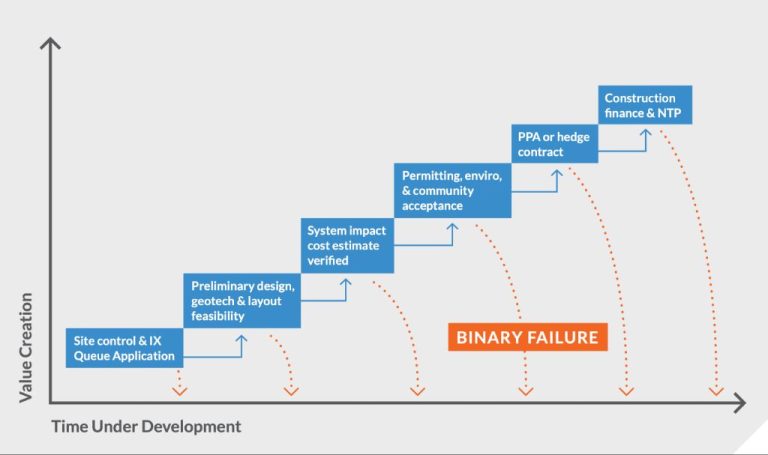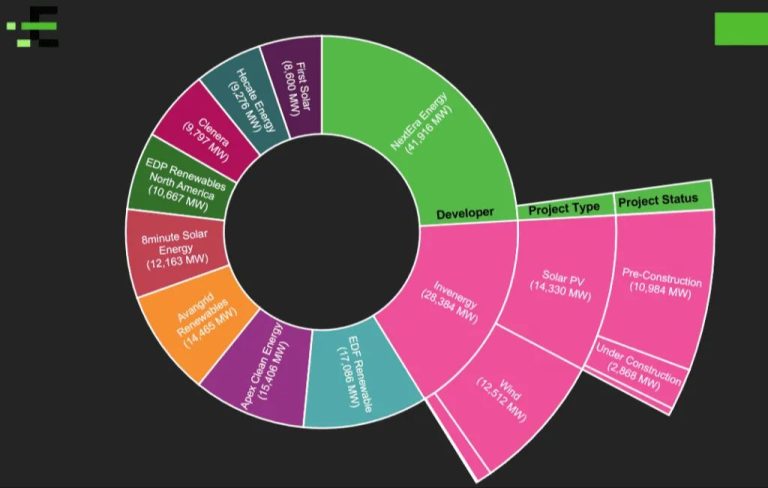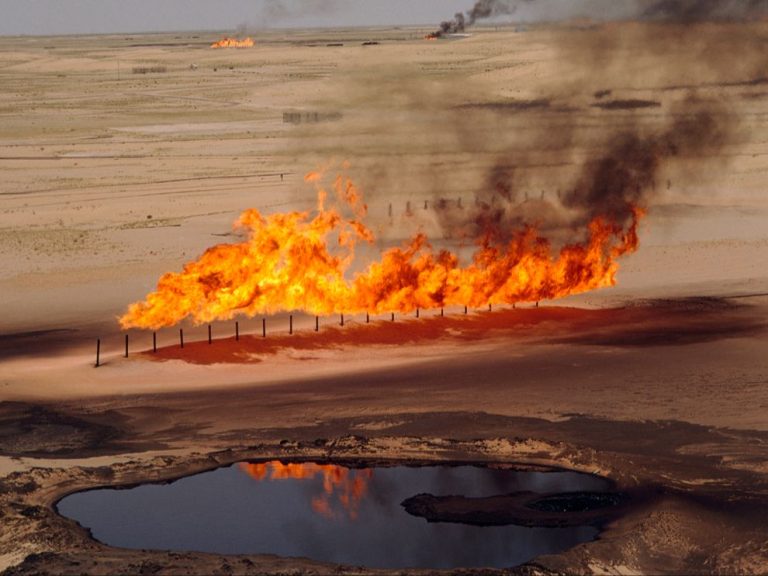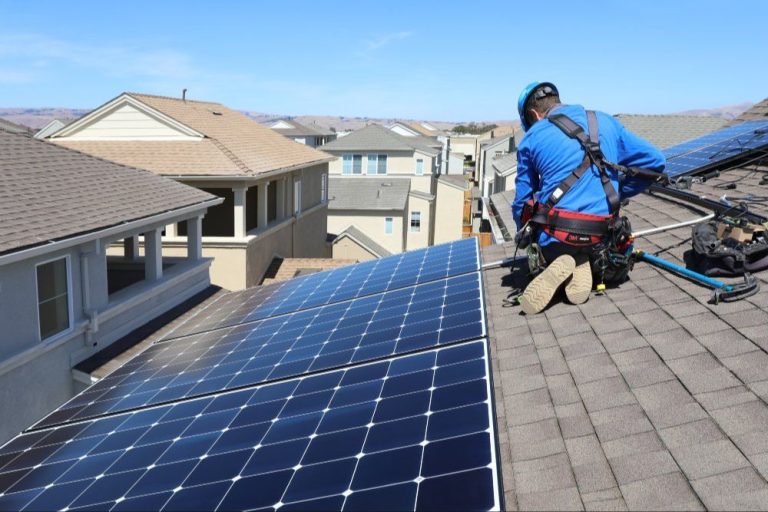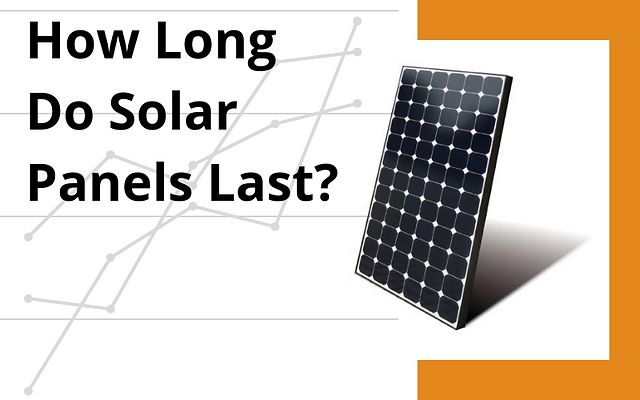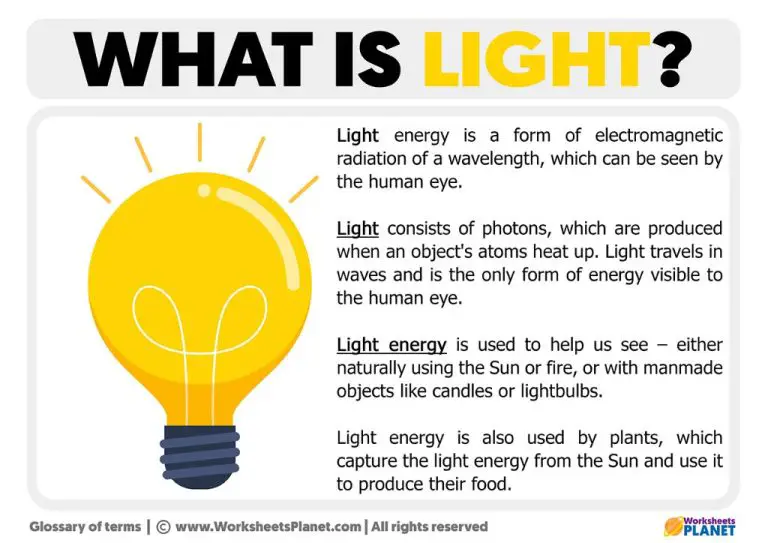What Happens If One Solar Panel Fails?
Solar panels are an increasingly popular source of renewable energy for homes and businesses. They work by converting sunlight into electricity through the photovoltaic effect. While solar panels are generally very reliable, they can occasionally fail or degrade over time. This can lead to reduced energy production if even a single panel in an array stops working properly. In this article, we will examine what happens if one solar panel in a system fails, the potential effects, and how to address the issue.
How Solar Panels Work
Solar panels work by converting sunlight into electricity through the photovoltaic effect. When sunlight hits the solar cells inside a solar panel, it knocks electrons free from the atoms in the semiconducting material, creating electron-hole pairs. The electrons then flow through the panel’s wiring to produce a direct electric current. This direct current gets converted into alternating current through an inverter for household use. The photovoltaic cells are made of semiconductor materials like silicon that have a particular bandgap energy which matches the energy of photons in sunlight. When a photon’s energy is absorbed by the semiconductor, its electric field frees an electron from its atomic bond, allowing it to flow freely. Thus solar panels directly convert light energy into electrical energy.
The most common solar panels use silicon solar cells made from single-crystal silicon or polycrystalline silicon. As sunlight hits the cells, the energized electrons move from the p-type silicon layer to the n-type silicon layer, creating a voltage difference across the junction. Metal conduction strips on the top and bottom of the cell collect the electrons and transfer them to external wires as direct current electricity. Multiple solar cells are connected together and encapsulated behind a glass sheet to form a complete modular solar panel.
Why Solar Panels Fail
Solar panels can fail for a variety of reasons. Some of the most common causes of solar panel failure include manufacturing defects, weather damage, and component failure.
Manufacturing defects refer to any flaws or imperfections present in the solar cells or wiring of a panel that exist from the time of production. These defects lead to hot spots and weak points in the panel. According to one source, cracks, poorly soldered joints, and cell mismatches are common manufacturing errors that cause panels to fail prematurely (Source).
Weather damage from hail, wind, snow loads, and thermal cycling can also cause solar panels to fail over time. Dramatic temperature fluctuations cause materials to expand and contract, leading to cracked solar cells and broken electrical connections. Moisture that seeps into a panel can corrode components and cause short circuits.
Finally, component failure is another major reason solar panels fail. The inverter, optimizers, or other electrical components connected to the system can malfunction and bring down panel production. Older panels also naturally degrade, losing efficiency and power output over time.
Effects of One Failed Panel
When one solar panel in an array fails, it can have a negative impact on the overall solar energy system and its production capabilities. According to DuPont, “If one panel fails, the rest of the panels in that string (series connection) produce less power.” This is because the failed panel acts as a resistor in the circuit, impeding the flow of electricity.
The degree of power loss depends on the number of panels in the string and the type of system failure. A completely dead panel will cause a bigger drop in power output versus one with a small crack or manufacturing defect. For example, in a string of 10 panels, one dead panel can reduce energy production by 10% for that section of the array.
Fortunately, many solar systems have monitoring that can detect drops in output and pinpoint the underperforming panels. Once identified, the failed panels can be replaced to restore the system’s full production capacity. Regular inspection and maintenance is key to minimize energy losses from panel degradation over time. According to Clean Energy Reviews, “Even a small problem, if left unaddressed can become more serious.”
Removing Failed Panels
When removing failed solar panels, safety should be the top priority. The process of disconnecting and removing panels involves working with live electrical connections and on rooftops, so proper precautions must be taken.
First, the panel experiencing issues should be disconnected from the rest of the system. This involves turning off the inverter and disconnecting the panel at both the positive and negative wire connections. Be sure to wear insulated gloves and use insulated tools when working with electrical connections. Refer to your system’s manual or contact the installation company for proper disconnection procedures.
Once electrically isolated, the panel can then be detached from the racking system. Rooftop work safety, including using harnesses and ropes, is crucial here. Panels are usually held in place by clamps or mounting hardware that can be removed. Be careful when handling panels as they are heavy, awkward, and have sharp metal edges and frames. Have an assistant help maneuver the panel safely up and down from the roof.
If unsure about any part of the removal process, it’s best to contact solar panel installers or roofers experienced in working with photovoltaic systems. They can ensure the job is done properly and safely. Always follow all directions and safety procedures when disconnecting and removing solar panels.
Replacing Failed Panels
When one solar panel fails, the best option is usually to replace it. Solar panel manufacturers typically provide replacement panels that match the existing system so you can swap it out like-for-like. For example, Maxsa Innovations offers direct replacements for all their solar lights.
Instead of just replacing the failed panel, some homeowners opt to upgrade to a newer, more efficient panel. Upgrading allows you to take advantage of improvements in solar technology to increase your system’s overall power production. However, upgrading one panel may create some mismatch within the system. Check with your installer to ensure compatibility if planning to upgrade an individual failed panel.
The cost to replace a failed 260W solar panel runs around $200-$250 for the new panel, plus $100-$200 for labor and any permitting fees. Upgrading to a more efficient panel costs more upfront but can pay off over time through increased energy production.
Costs
Replacing a failed solar panel can be costly, with prices varying widely depending on the type of system, number of panels needing replacement, and labor involved. According to HomeAdvisor, solar panel repairs typically cost around $100 per hour for labor, with the national average for replacing a single panel being $750 (Source). For a small 5 kW system with 20 panels, replacing just one panel may cost $200-$400 for the new panel, plus $100-$200 for labor and any permit fees, for a total of $300-$600. For larger systems or multiple panel replacements, costs go up significantly.
Angi notes the average cost to repair a solar panel is $809, ranging from $223 for minor fixes to $1,442 for full panel swaps (Source). Fixr estimates a slightly higher range of $400-$1,000 per repaired panel, with labor accounting for much of the cost (Source). In any solar panel replacement job, labor and permits often exceed equipment costs.
To save on labor fees, some homeowners choose to replace panels themselves. However, this requires knowledge of electrical systems and rooftop safety. Hiring a NABCEP-certified solar contractor to handle replacements professionally is highly recommended.
Maintenance
Regular maintenance is crucial for preventing issues and detecting early signs of failure in solar panels. Preventative maintenance helps keep your solar panels operating efficiently and extending their lifespan. Here are some tips for maintaining your solar panel system:
Clean the panels at least twice per year, more often if they are in a dusty area. Use water and a soft brush or cloth to gently wipe away dirt, bird droppings, pollen, etc. Avoid abrasive materials that could scratch the panels. Check the manufacturer’s instructions for any cleaning solutions they recommend.1
Inspect all electrical connections, wirings, and conduits for damage or wear. Tighten any loose connections. Check that all solar panel fasteners are secure. Repair any cracked or damaged panels right away.
Clear any overhanging branches, plants, or debris that may be shading the solar panels. Even partial shading can drastically reduce output. Keep an eye out for pests like birds or squirrels nesting on the panels.
Monitor your system’s performance regularly for any drops in production that could indicate an issue. Most solar panel systems have monitoring software that tracks energy output.
Have a professional solar technician do a thorough inspection and maintenance check at least once a year. They can spot potential problems early and perform necessary repairs.
By staying on top of solar panel maintenance, you can keep your system running smoothly for 20-30 years or longer.2
System Monitoring
It’s critical to monitor a solar panel system in order to identify any underperforming panels that could reduce the system’s overall energy production. Advanced monitoring systems provide real-time performance data and alerts to pinpoint issues.
Top solar monitoring platforms like SolarEdge and Enphase Enlighten offer comprehensive monitoring to optimize system performance. They track power output for individual panels and alert homeowners if a panel falls below expectations. This allows for targeted troubleshooting and maintenance.
By closely monitoring system production, homeowners can identify and replace faulty panels. This helps maximize total energy yield over the system’s lifetime. Proper monitoring transforms solar panels from passive devices to active, optimized assets.
Conclusion
Dealing with a failed solar panel can seem daunting at first, but with the right information and preparation, it doesn’t have to be. To recap, here are the key things to know:
– Diagnosing panel issues quickly is key through routine maintenance and monitoring. This allows you to identify and address failures before they spread.
– Simply covering a failed panel with an opaque material is often the easiest short-term solution. This stops electricity generation while allowing the rest of the system to function.
– For a permanent fix, the panel will need to be removed and replaced. This typically costs $150-300 for residential systems, depending on labor.
– Replacing a panel one at a time instead of the whole system keeps costs manageable. New panels can be purchased individually.
– With proactive maintenance and readiness for occasional panel failures, homeowners can enjoy reliable solar power for decades.

